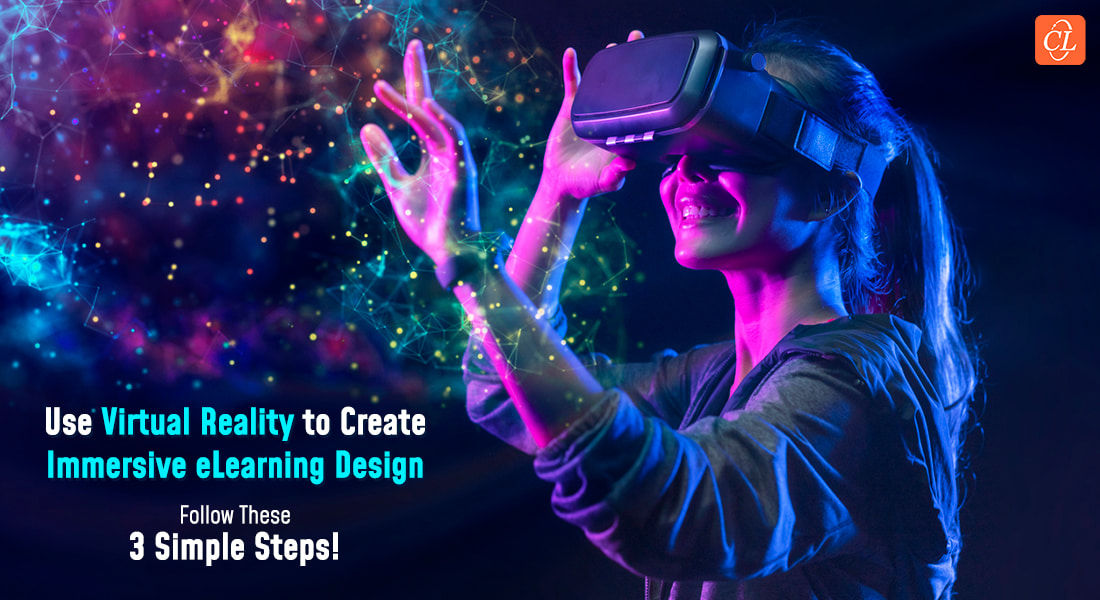Why is Augmented Reality a Game-Changer in eLearning Design & Development

“Imagine being able to explore the intricacies of a human heart or travel through time to witness historical events first-hand, all from the comfort of your own home. Thanks to the revolutionary technology of augmented reality (AR), this kind of immersive learning experience is now possible – and it’s changing the game for eLearning design and development.”
In this blog post, we’ll dive into why AR is such a powerful tool for education, how it’s transforming the way we learn, and what you can do to incorporate this cutting-edge technology into your own eLearning programs.
Curious to Know How Augmented Reality Can be Used in eLearning?
Here are the key ways how:
- AR can be used to create immersive learning experiences
- AR can be used to provide real-time feedback
- AR can be used to customize the learning experience
Let’s start with a brief understanding of augmented reality
Augmented Reality
Augmented reality (AR) is a technology that superimposes computer-generated images on a user’s view of the real world, providing a composite view. AR has been used in gaming and entertainment for some time, but only recently has it begun to be used for corporate training as well.
There are many potential applications for AR in eLearning, including:
- Allowing learners to experience complex concepts in a virtual environment without the need for expensive physical equipment.
- Enabling learners to interact with virtual objects and characters in a realistic way.
- Providing just-in-time information and guidance to learners as they work through tasks or problems.
The use of AR in eLearning design and development can provide a more immersive and engaging learning experience for the employees. It also has the potential to make learning more efficient by providing learners with relevant information exactly when they need it. In all, it makes learning a fun, efficient and engaging experience.
Benefits of Using Augmented Reality in eLearning
When it comes to eLearning, augmented reality (AR) can provide a number of benefits that can make the learning process more engaging and effective. Here are some of the ways AR can be used in eLearning:
1. AR can be used to create immersive learning experiences.
With AR, learners can be placed in realistic virtual environments where they can interact with 3D objects and characters. This can make the learning experience more immersive and engaging, leading to better retention of information.
→ Download Now: Instructional Design Strategies to Design Engaging eLearning Courses [eBook]
2. AR can be used to provide real-time feedback.
Learners can receive real-time feedback on their performance when using AR-enabled eLearning applications. This immediate feedback can help them identify their strengths and weaknesses, and adjust their learning strategies accordingly.
3. AR can be used to customize the learning experience.
Since AR allows learners to interact with digital content in a real-world setting, eLearning developers have the ability to customize the learning experience based on each individual learner’s needs and preferences. For example, learners who prefer hands-on learning may benefit from augmented reality eLearning simulations that allow them to experiment with different concepts before putting them into practice in the real world.
Examples of Augmented Reality Tools for eLearning Design and Development
1. Aurasma: Aurasma is an app that allows you to create and view augmented reality experiences. It is simple to use and has a wide range of features, making it a great tool for eLearning design and development.
2. Layar: Layar is an app that lets you view digital content in the real world. You can use it to view augmented reality content, or to view the learning environment.
3. Wikitude: Wikitude is an application that offers information about the environment. It can be used to understand the learning environment, possible distractions, etc.
4. Ingress: Ingress is an app that uses GPS to track your location in the real world. You can use it to track your progress or to visualize the environment where the training is happening.
Challenges Faced by AR in eLearning
One of the key challenges faced by AR in eLearning is the need for specialized hardware. This can be a challenge for both developers and learners, as it can be expensive to purchase and maintain the necessary equipment. In addition, AR applications can be resource intensive, so learners may need access to high-powered computers or devices in order to use them effectively. Another challenge is that AR technology is still in its early stages of development, so there can be a learning curve associated with using it. Additionally, designing effective AR experiences can be challenging, as it requires a deep understanding of how people learn and interact with digital content.
Best Practices for Implementing AR in eLearning Design and Development
When it comes to implementing AR in eLearning design and development, there are a few best practices that you should keep in mind. First and foremost, you need to make sure that your target audience is compatible with the technology. Secondly, you should consider the purpose of using AR in your eLearning course or program. Is it to simply enhance the learning experience, or is it to provide a more immersive and interactive experience?
Thirdly, you need to think about how AR will be integrated into your existing eLearning content and curriculum. Will it be used as supplemental material or will it be used as the primary delivery method? Lastly, you should test out the technology before rolling it out to your entire audience. By doing so, you can work out any kinks and ensure that the overall experience is positive for everyone involved.
Wrapping Up
Augmented reality is an exciting new technology that can revolutionize eLearning design and development. It provides users with an immersive experience that allows them to gain knowledge more quickly and effectively, while also providing developers with a range of new tools to create engaging content. The many benefits that it offers is what makes it one of the most important eLearning trends for the future.
Want to know more about such trends? This Webinar Recording can help…
Access Now!




![Why We Love Rapid eLearning Development: Myth Vs. Reality [Infographic]](https://blog.commlabindia.com/hubfs/Imported_Blog_Media/valentines-day-01.jpg)
